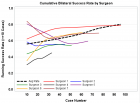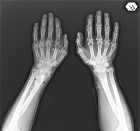Abstract
Mini Review
A Brief Dig into the Potent Medicinal Plant Phyllanthus Amarus Schum. and Thonn.
Aparupa Bose Mazumdar Ghosh and Sharmila Chattopadhyay*
Published: 27 March, 2024 | Volume 8 - Issue 1 | Pages: 025-028
Phyllanthus amarus Schum. and Thonn., a plant of substantial medicinal significance, is known for its usage in the ‘Ayurvedic’ system of medicine for over 2000 years. This herb grows throughout the world including India. P. amarus along with other species of its genus has been a vital part of several herbal formulations available in the Indian market under the trade name Bhuiamlaki. Several pharmacognostic evaluations over the years established the genus Phyllanthus of great commercial value. Ethnopharmacological studies conducted with P. amarus to date have shown its diverse therapeutic usage globally. This owes to the vast array of secondary metabolites present in the herb, substantially in the leaf tissue. Different analytical and phytochemistry studies performed across the globe revealed that P. amarus is a hub of various classes of secondary metabolites viz. lignans like phyllanthin, hypophyllanthin, flavonoids, alkaloids, triterpenes, sterols, volatile oil, ellagitannins including simple and complex tannins, etc. Different analytical techniques have been employed over the past years for isolating and studying these varied secondary metabolites. Further, bioactivities and pharmacological properties of P. amarus that were mainly due to the presence of these wide arrays of secondary metabolites have also been explored extensively across the globe by several research groups. This plant has also been explored at molecular and transcriptome level, although relatively lesser but its extensive molecular and transcriptome analysis have only been performed from our lab. Thus, P. amarus has considerable potential to be explored in the future as a significant therapeutic source not only in the traditional medicinal system but also in the modern pharmaceutical industry.
Read Full Article HTML DOI: 10.29328/journal.jpsp.1001127 Cite this Article Read Full Article PDF
Keywords:
P. amarus; Secondary metabolites; Therapeutics
References
- Syamasundar KV, Singh B, Thakur RS, Husain A, Kiso Y, Hikino H. Antihepatotoxic principles of Phyllanthus niruri herbs. J Ethnopharmacol. 1985 Sep;14(1):41-4. doi: 10.1016/0378-8741(85)90026-1. PMID: 4087921.
- Calixto JB, Santos AR, Cechinel Filho V, Yunes RA. A review of the plants of the genus Phyllanthus: their chemistry, pharmacology, and therapeutic potential. Med Res Rev. 1998 Jul;18(4):225-58. doi: 10.1002/(sici)1098-1128(199807)18:4<225::aid-med2>3.0.co;2-x. PMID: 9664291.
- Thyagarajan SP, Jayaram S, Gopalakrishnan V, Hari R, Jeyakumar P, Sripathi MS. Herbal medicines for liver diseases in India. J Gastroenterol Hepatol. 2002 Dec;17 Suppl 3:S370-6. doi: 10.1046/j.1440-1746.17.s3.30.x. PMID: 12472966.
- Khanth SPE, Mishra A, Mandal S, Chawla S, Kalra BS. Hepatoprotective potential of Phyllanthus niruri and Andrographis paniculata in isoniazid-rifampicin induced hepatotoxicity in rats. Indian Journal of Tuberculosis. 2023. https://doi.org/10.1016/j.ijtb.2023.12.009
- Harish R, Shivanandappa T. Antioxidant activity and hepatoprotective potential of Phyllanthus niruri. Food Chem. 2006; 95:180–5.
- Nguyen VT, Pham HNT, Bowyer MC, van Altena IA, Scarlett CJ. Influence of solvents and novel extraction methods on bioactive compounds and antioxidant capacity of Phyllanthus amarus. Chem Pap. 2016; 70:556–66. https:// doi.org/ 10. 1515/chemp ap- 2015- 0240.
- Carmagnani HJ, Mansano GB, Balista PA, Gonzaga RV, Sobreira F, Dario MF. Antioxidant activity and physicochemical stability of phytocosmetic formulations containing Phyllanthus niruri Rev Bras Plantas Med/Braz J Med Plants. 2023, 30; 25:10-6.
- Hasan M, Safarianti S, Ramadhani A, F Khilfi, S Suryawati, S, & Husna F. Bioactive Compounds and In Vitro Evaluation of Phyllanthus niruri Extract as Antioxidant and Antimicrobial Activities. Trends in Sciences 2024; 21(2), 7130. https://doi.org/10.48048/tis.2024.7130
- Srividya N, Periwal S. Diuretic, hypotensive and hypoglycaemic effect of Phyllanthus amarus. Indian J Exp Biol. 1995 Nov;33(11):861-4. PMID: 8786163.
- Matou M, Merciris P, Luz Sanchez-Villavicencio M, Herbette G, Neviere R, Haddad P, Marianne-Pepin T, Bercion S. Polyphenolic compounds of Phyllanthus amarus Schum & Thonn. (1827) and diabetes-related activity of an aqueous extract as affected by in vitro gastrointestinal digestion. J Ethnopharmacol. 2023 Oct 28;315:116619. doi: 10.1016/j.jep.2023.116619. Epub 2023 May 16. PMID: 37201665.
- Ajitha B, Reddy YA, Jeon HJ, Ahn CW. Synthesis of silver nanoparticles in an eco-friendly way using Phyllanthus amarus leaf extract: antimicrobial and catalytic activity. Adv Powder Technol. 2018; 29(1):86–93. https://doi.org/10.1016/j.apt. 2017.10.0150
- Oyekanmi BA, Osho IB, Kolawole JC. Antimicrobial, phytochemical and pharmacological properties of Phyllanthus niruri Linn. Research Journal of Health Sciences. 2023; 11(2):108-18.
- Kiemer AK, Hartung T, Huber C, Vollmar AM. Phyllanthus amarus has anti-inflammatory potential by inhibition of iNOS, COX-2, and cytokines via the NF-kappaB pathway. J Hepatol. 2003 Mar;38(3):289-97. doi: 10.1016/s0168-8278(02)00417-8. PMID: 12586294.
- Kassuya CA, Leite DF, de Melo LV, Rehder VL, Calixto JB. Anti-inflammatory properties of extracts, fractions and lignans isolated from Phyllanthus amarus. Planta Med. 2005 Aug;71(8):721-6. doi: 10.1055/s-2005-871258. PMID: 16142635.
- Harikrishnan H, Jantan I, Haque MA, Kumolosasi E. Phyllanthin from Phyllanthus amarus inhibits LPS-induced proinflammatory responses in U937 macrophages via downregulation of NF-κB/MAPK/PI3K-Akt signaling pathways. Phytother Res. 2018 Dec;32(12):2510-2519. doi: 10.1002/ptr.6190. Epub 2018 Sep 20. PMID: 30238535.
- Olorunnisola OS, Fadahunsi OS, Adegbola PI, Ajilore BS, Ajayi FA, Olaniyan LWB. Phyllanthus amarusattenuated derangement in renal-cardiac function, redox status, lipid profile and reduced TNF-α, interleukins-2, 6 and 8 in high salt diet fed rats. Heliyon. 2021 Oct 1;7(10):e08106. doi: 10.1016/j.heliyon.2021.e08106. PMID: 34660924; PMCID: PMC8502905.
- Iteire KA, Gbayisomore TJ, Olatuyi OM. Anti-inflammatory, anticholinesterase, antioxidant, and memory enhancement potential of Phyllanthus amarus in potassium-dichromate induced neurotoxicity of male Wistar rats. J Chem Neuroanat. 2023 Oct;132:102308. doi: 10.1016/j.jchemneu.2023.102308. Epub 2023 Jul 7. PMID: 37423467.
- Ogata T, Higuchi H, Mochida S, Matsumoto H, Kato A, Endo T, Kaji A, Kaji H. HIV-1 reverse transcriptase inhibitor from Phyllanthus niruri. AIDS Res Hum Retroviruses. 1992 Nov;8(11):1937-44. doi: 10.1089/aid.1992.8.1937. PMID: 1283310.
- Notka F, Meier G, Wagner R. Concerted inhibitory activities of Phyllanthus amarus on HIV replication in vitro and ex vivo. Antiviral Res. 2004 Nov;64(2):93-102. doi: 10.1016/j.antiviral.2004.06.010. PMID: 15498604.
- Seetaha S, Hannongbua S, Rattanasrisomporn J, Choowongkomon K. Novel peptides with HIV-1 reverse transcriptase inhibitory activity derived from the fruits of Quercus infectoria. Chem Biol Drug Des. 2021 Jan;97(1):157-166. doi: 10.1111/cbdd.13770. Epub 2020 Aug 24. PMID: 32757477.
- Joy KL, Kuttan R. Inhibition by Phyllanthus amarus of hepatocarcinogenesis induced by N-Nitrosodiethylamine. J Clin Biochem Nutr. 1998; 24:133–9.
- Kumar KB, Kuttan R. Protective effect of an extract of Phyllanthus amarus against radiation-induced damage in mice. J Radiat Res. 2004 Mar;45(1):133-9. doi: 10.1269/jrr.45.133. PMID: 15133301.
- Nguyen VT, Scarlett CJ. Cytotoxic activity of extracts and fractions from Paramignya trimeraroot and Phyllanthus amarus against pancreatic cancer cell lines. J Cancer Res Ther. 2019 Jan-Mar;15(1):245-249. doi: 10.4103/jcrt.JCRT_85_18. PMID: 30880785.
- Abdel-Sattar OE, Allam RM, Al-Abd AM, El-Halawany AM, El-Desoky AM, Mohamed SO, Sweilam SH, Khalid M, Abdel-Sattar E, Meselhy MR. Hypophyllanthin and Phyllanthin from Phyllanthus niruriSynergize Doxorubicin Anticancer Properties against Resistant Breast Cancer Cells. ACS Omega. 2023 Jul 28;8(31):28563-28576. doi: 10.1021/acsomega.3c02953. PMID: 37576627; PMCID: PMC10413485.
- Adejoro IA, Babatunde DD, Tolufashe GF. Molecular docking and dynamic simulations of some medicinal plants compounds against SARS-CoV-2: an in silico study. J Taibah Univ Sci. 2020; 14(1):1563–70. https://doi.org/10.1080/16583655. 2020.18480 49.
- Hiremath S, Kumar HDV, Nandan M, Mantesh M, Shankarappa KS, Venkataravanappa V, Basha CRJ, Reddy CNL. In silico docking analysis revealed the potential of phytochemicals present in Phyllanthus amarusand Andrographis paniculata, used in Ayurveda medicine in inhibiting SARS-CoV-2. 3 Biotech. 2021 Feb;11(2):44. doi: 10.1007/s13205-020-02578-7. Epub 2021 Jan 11. PMID: 33457171; PMCID: PMC7799430.
- Murthy TK, Joshi T, Gunnan S, Kulkarni N, Priyanka V, Kumar SB, Gowrishankar BS. In silico analysis of Phyllanthus amarus phytochemicals as potent drugs against SARS-CoV-2 main protease. Curr Res Green Sustain Chem (CRGSC). 2021; 4:100159. https://doi.org/10.1016/j.crgsc.2021.100159
- Ignacimuthu S, Ayyanar M, Sankarasivaraman K. Ethnobotanical study of medicinal plants used by Paliyar tribals in Theni district of Tamil Nadu, India. Fitoterapia. 2008 Dec;79(7-8):562-8. doi: 10.1016/j.fitote.2008.06.003. Epub 2008 Jul 11. PMID: 18678232.
- Mahishi P, Srinivasa BH, Shivanna MB. Medicinal plant wealth of local communities in some villages in Shimoga District of Karnataka, India. J Ethnopharmacol. 2005 Apr 26;98(3):307-12. doi: 10.1016/j.jep.2005.01.035. PMID: 15814264.
- Abo KA, Fred-Jaiyesimi AA, Jaiyesimi AE. Ethnobotanical studies of medicinal plants used in the management of diabetes mellitus in South Western Nigeria. J Ethnopharmacol. 2008 Jan 4;115(1):67-71. doi: 10.1016/j.jep.2007.09.005. Epub 2007 Sep 14. PMID: 17950547.
- Asase A, Akwetey GA, Achel DG. Ethnopharmacological use of herbal remedies for the treatment of malaria in the Dangme West District of Ghana. J Ethnopharmacol. 2010 Jun 16;129(3):367-76. doi: 10.1016/j.jep.2010.04.001. Epub 2010 Apr 9. PMID: 20382213.
- van Andel T, Westers P. Why Surinamese migrants in the Netherlands continue to use medicinal herbs from their home country. J Ethnopharmacol. 2010 Feb 17;127(3):694-701. doi: 10.1016/j.jep.2009.11.033. Epub 2009 Dec 11. PMID: 20004237.
- Huang YL, Chen CC, Ou JC. Isolintetralin: A New Lignan from Phyllanthus niruri. Planta Med. 1992 Oct;58(5):473-4. doi: 10.1055/s-2006-961520. PMID: 17226507.
- Kassuya CA, Silvestre A, Menezes-de-Lima O Jr, Marotta DM, Rehder VL, Calixto JB. Antiinflammatory and antiallodynic actions of the lignan niranthin isolated from Phyllanthus amarus. Evidence for interaction with platelet activating factor receptor. Eur J Pharmacol. 2006 Sep 28;546(1-3):182-8. doi: 10.1016/j.ejphar.2006.07.025. Epub 2006 Jul 22. PMID: 16925995.
- Chopade AR, Pol RP, Patil PA, Dharanguttikar VR, Naikwade NS, Dias RJ, Mali SN. An Insight Into the Anxiolytic Effects of Lignans (Phyllanthin and Hypophyllanthin) and Tannin (Corilagin) Rich Extracts of Phyllanthus amarus: An In-Silico and In-vivo Comb Chem High Throughput Screen. 2021;24(3):415-422. doi: 10.2174/1386207323666200605150915. PMID: 32503404.
- Nara TK, Glyeye J, Lavergne de Cerval E, Stanislan E. Flavonoids of Phyllanthus niruri L., Phyllanthus urinaria L., Phyllanthus orbiculatus L. c. rich. Plants Med Phytother. 1977; 11:82–6
- Londhe JS, Devasagayam TP, Foo LY, Ghaskadbi SS. Antioxidant activity of some polyphenol constituents of the medicinal plant Phyllanthus amarus Linn. Redox Rep. 2008;13(5):199-207. doi: 10.1179/135100008X308984. PMID: 18796238.
- Mulchandani NB, Hassarajani SA. 4-Methoxy-nor-Securinine, a New Alkaloid from Phyllanthus niruri. Planta Med. 1984 Feb;50(1):104-5. doi: 10.1055/s-2007-969635. PMID: 17340265.
- Joshi BS, Gawad DH, Pelletier SW, Kartha G, Bhandary K. Isolation and structure (X-ray analysis) of ent-norsecurinine, an alkaloid from Phyllanthus niruri. J Nat Prod. 1986 Jul-Aug;49(4):614-20. doi: 10.1021/np50046a009. PMID: 3783157.
- Houghton PJ, Woldemariama TZ, Siobhan OS, Thyagarajan SP. Two securinega type alkaloids from Phyllanthus amarus. Phytochemistry. 1996;43
- Singh B, Agrawal PK, Thakur RS. An acyclic triterpene from Phyllanthus niruri. Phytochemistry. 1989. https://doi.org/10.1016/S0031-9422(00)97901-9.
- Dhalwal K, Biradar YS, Rajani M. High-performance thin-layer chromatography densitometric method for simultaneous quantitation of phyllanthin, hypophyllanthin, gallic acid, and ellagic acid in Phyllanthus amarus. J AOAC Int. 2006 May-Jun;89(3):619-23. PMID: 16792060.
- Foo LY, Wong H. Phyllanthusiin D, an unusual hydrolysable tannin from Phyllanthus amarus. Phytochemistry.1992; 31:711–3.
- Joshi BS, Gawad DH, Pelletier SW, Kartha G, Bhandary K. Isolation and structure (X-ray analysis) of ent-norsecurinine, an alkaloid from Phyllanthus niruri. J Nat Prod. 1986 Jul-Aug;49(4):614-20. doi: 10.1021/np50046a009. PMID: 3783157.
- Dhalwal K, Biradar YS, Rajani M. High-performance thin-layer chromatography densitometric method for simultaneous quantitation of phyllanthin, hypophyllanthin, gallic acid, and ellagic acid in Phyllanthus amarus. J AOAC Int. 2006 May-Jun;89(3):619-23. PMID: 16792060.
- Kumar S, Singh A, Bajpai V, Singh B, Kumar B. Development of a UHPLC-MS/MS method for the quantitation of bioactive compounds in Phyllanthus species and its herbal formulations. J Sep Sci. 2017 Sep;40(17):3422-3429. doi: 10.1002/jssc.201601361. Epub 2017 Aug 14. PMID: 28683189.
- Muthusamy A, Sanjay ER, Nagendra Prasad HN, Radhakrishna Rao M, Manjunath Joshi B, Padmalatha Rai S, Satyamoorthy K. Quantitative Analysis of Phyllanthus Species for Bioactive Molecules Using High-Pressure Liquid Chromatography and Liquid Chromatography–Mass Spectrometry. Proc Natl Acad Sci India Sect B. 2017; https:// doi. org/ 10. 1007/ s40011- 017- 0839-y.
- Maciel M, Cunha A, Dantas F, Kaiser C. NMR characterization of bioactive lignans from Phyllanthus amarus Schum and Thonn. J Magn Reson Imaging. 2007; 6:76–82.
- Mediani A, Abas F, Maulidiani M, Khatib A, Tan CP, Ismail IS, Shaari K, Ismail A. Characterization of Metabolite Profile in Phyllanthus niruri and Correlation with Bioactivity Elucidated by Nuclear Magnetic Resonance Based Metabolomics. Molecules. 2017 May 30;22(6):902. doi: 10.3390/molecules22060902. PMID: 28556789; PMCID: PMC6152626.
- Sousa AD, Maia IV, Ribeiro PRV, Canuto KM, Zocolo GJ, Brito E Sousa de. UPLC-QTOF-MSE-based chemometric approach driving the choice of the best extraction process for Phyllanthus niruri. Sep Sci Technol. 2017;52(10):1696–1706.
- Sousa AD, Maia IV, Ribeiro PRV, Canuto KM, Zocolo GJ, Brito E Sousa de. UPLC-QTOF-MSE-based chemometric approach driving the choice of the best extraction process for Phyllanthus niruri. Sep Sci Technol. 2017;52(10):1696–1706.
- Ajayi GO, Olorunrinu TJ, Shittu MA. Elucidation of bioactive compounds in hydroalcohol extract of Phyllanthus amarus and Thonn. leaf using GC-MS analysis. J Sci Innov Res.2020; 9:40–7.
- Bose Mazumdar Ghosh A, Banerjee A, Chattopadhyay S. An insight into the potent medicinal plant Phyllanthus amarus and Thonn. Nucleus (Calcutta). 2022;65(3):437-472. doi: 10.1007/s13237-022-00409-z. Epub 2022 Nov 12. PMID: 36407559; PMCID: PMC9660160.
- Banerjee A, Chattopadhyay S. Genetic transformation of a hepatoprotective plant, Phyllanthus amarus. In Vitro Cell Dev Biol-Plant 2009; 45:57–64. https:// doi. org/ 10. 1007/s11627- 008- 9160-z
- Banerjee, A., Chattopadhyay, S. Effect of over-expression of Linum usitatissimum PINORESINOL LARICIRESINOL REDUCTASE (LuPLR) gene in transgenic Phyllanthus amarus. Plant Cell Tiss Organ Cult. 2010; 103:315–323. https://doi.org/10.1007/s11240-010-9781-x
- Chattopadhyay S, Bose Mazumdar Ghosh A. Establishment of cDNA library and EST analysis from leaves of Phyllanthus amarus. Int J Biochem Res Rev. 2014; 4:1–15. https:// doi. org/10. 9734/ IJBCRR/ 2014/ 5262.
- Bose Mazumdar A, Chattopadhyay S. Sequencing, De novo Assembly, Functional Annotation and Analysis of Phyllanthus amarus Leaf Transcriptome Using the Illumina Platform. Front Plant Sci. 2016 Jan 28;6:1199. doi: 10.3389/fpls.2015.01199. PMID: 26858723; PMCID: PMC4729934.
Figures:
Similar Articles
-
Advances in research of the structural gene characteristics of the aflatoxin biosynthetic gene clusterZhu-Mei He*,Qi-Zhang Li. Advances in research of the structural gene characteristics of the aflatoxin biosynthetic gene cluster. . 2018 doi: 10.29328/journal.jpsp.1001022; 2: 068-082
-
UPLC-Q-TOF-MS-based untargeted studies of the secondary metabolites secreted by Sclerotinia sclerotiorum under the axenic conditionNavin Chandra Gupta*,Shaweta Arora#,Aditi Kundu,Pankaj Sharma,Mahesh Rao,Ramcharan Bhattacharya. UPLC-Q-TOF-MS-based untargeted studies of the secondary metabolites secreted by Sclerotinia sclerotiorum under the axenic condition. . 2022 doi: 10.29328/journal.jpsp.1001095; 6: 173-182
-
The secondary metabolites profiling of the phytopathogenic fungus Sclerotinia SclerotiorumSarah Otun*, Ikechukwu Achilonu, Khayalethu Ntushelo. The secondary metabolites profiling of the phytopathogenic fungus Sclerotinia Sclerotiorum. . 2023 doi: 10.29328/journal.jpsp.1001102; 7: 027-038
-
A Brief Dig into the Potent Medicinal Plant Phyllanthus Amarus Schum. and Thonn.Aparupa Bose Mazumdar Ghosh, Sharmila Chattopadhyay*. A Brief Dig into the Potent Medicinal Plant Phyllanthus Amarus Schum. and Thonn.. . 2024 doi: 10.29328/journal.jpsp.1001127; 8: 025-028
-
GS-MS Profile, Total Flavonoid and Phenolic Contents and Antioxidant Capacity of Leaves of Vitelleria paradoxa c.f. GaertnTheresa Ibibia Edewor*, Amuda Mutiu Olasunkanmi, Stephen Oluwagbemiga Owa. GS-MS Profile, Total Flavonoid and Phenolic Contents and Antioxidant Capacity of Leaves of Vitelleria paradoxa c.f. Gaertn. . 2024 doi: 10.29328/journal.jpsp.1001131; 8: 043-047
Recently Viewed
-
Synthesis of Carbon Nano Fiber from Organic Waste and Activation of its Surface AreaHimanshu Narayan*,Brijesh Gaud,Amrita Singh,Sandesh Jaybhaye. Synthesis of Carbon Nano Fiber from Organic Waste and Activation of its Surface Area. Int J Phys Res Appl. 2019: doi: 10.29328/journal.ijpra.1001017; 2: 056-059
-
Obesity Surgery in SpainAniceto Baltasar*. Obesity Surgery in Spain. New Insights Obes Gene Beyond. 2020: doi: 10.29328/journal.niogb.1001013; 4: 013-021
-
Tamsulosin and Dementia in old age: Is there any relationship?Irami Araújo-Filho*,Rebecca Renata Lapenda do Monte,Karina de Andrade Vidal Costa,Amália Cinthia Meneses Rêgo. Tamsulosin and Dementia in old age: Is there any relationship?. J Neurosci Neurol Disord. 2019: doi: 10.29328/journal.jnnd.1001025; 3: 145-147
-
Case Report: Intussusception in an Infant with Respiratory Syncytial Virus (RSV) Infection and Post-Operative Wound DehiscenceLamin Makalo*,Orlianys Ruiz Perez,Benjamin Martin,Cherno S Jallow,Momodou Lamin Jobarteh,Alagie Baldeh,Abdul Malik Fye,Fatoumatta Jitteh,Isatou Bah. Case Report: Intussusception in an Infant with Respiratory Syncytial Virus (RSV) Infection and Post-Operative Wound Dehiscence. J Community Med Health Solut. 2025: doi: 10.29328/journal.jcmhs.1001051; 6: 001-004
-
The prevalence and risk factors of chronic kidney disease among type 2 diabetes mellitus follow-up patients at Debre Berhan Referral Hospital, Central EthiopiaGetaneh Baye Mulu,Worku Misganew Kebede,Fetene Nigussie Tarekegn,Abayneh Shewangzaw Engida,Migbaru Endawoke Tiruye,Mulat Mossie Menalu,Yalew Mossie,Wubshet Teshome,Bantalem Tilaye Atinafu*. The prevalence and risk factors of chronic kidney disease among type 2 diabetes mellitus follow-up patients at Debre Berhan Referral Hospital, Central Ethiopia. J Clini Nephrol. 2023: doi: 10.29328/journal.jcn.1001104; 7: 025-031
Most Viewed
-
Evaluation of Biostimulants Based on Recovered Protein Hydrolysates from Animal By-products as Plant Growth EnhancersH Pérez-Aguilar*, M Lacruz-Asaro, F Arán-Ais. Evaluation of Biostimulants Based on Recovered Protein Hydrolysates from Animal By-products as Plant Growth Enhancers. J Plant Sci Phytopathol. 2023 doi: 10.29328/journal.jpsp.1001104; 7: 042-047
-
Sinonasal Myxoma Extending into the Orbit in a 4-Year Old: A Case PresentationJulian A Purrinos*, Ramzi Younis. Sinonasal Myxoma Extending into the Orbit in a 4-Year Old: A Case Presentation. Arch Case Rep. 2024 doi: 10.29328/journal.acr.1001099; 8: 075-077
-
Feasibility study of magnetic sensing for detecting single-neuron action potentialsDenis Tonini,Kai Wu,Renata Saha,Jian-Ping Wang*. Feasibility study of magnetic sensing for detecting single-neuron action potentials. Ann Biomed Sci Eng. 2022 doi: 10.29328/journal.abse.1001018; 6: 019-029
-
Pediatric Dysgerminoma: Unveiling a Rare Ovarian TumorFaten Limaiem*, Khalil Saffar, Ahmed Halouani. Pediatric Dysgerminoma: Unveiling a Rare Ovarian Tumor. Arch Case Rep. 2024 doi: 10.29328/journal.acr.1001087; 8: 010-013
-
Physical activity can change the physiological and psychological circumstances during COVID-19 pandemic: A narrative reviewKhashayar Maroufi*. Physical activity can change the physiological and psychological circumstances during COVID-19 pandemic: A narrative review. J Sports Med Ther. 2021 doi: 10.29328/journal.jsmt.1001051; 6: 001-007

HSPI: We're glad you're here. Please click "create a new Query" if you are a new visitor to our website and need further information from us.
If you are already a member of our network and need to keep track of any developments regarding a question you have already submitted, click "take me to my Query."




















































































































































